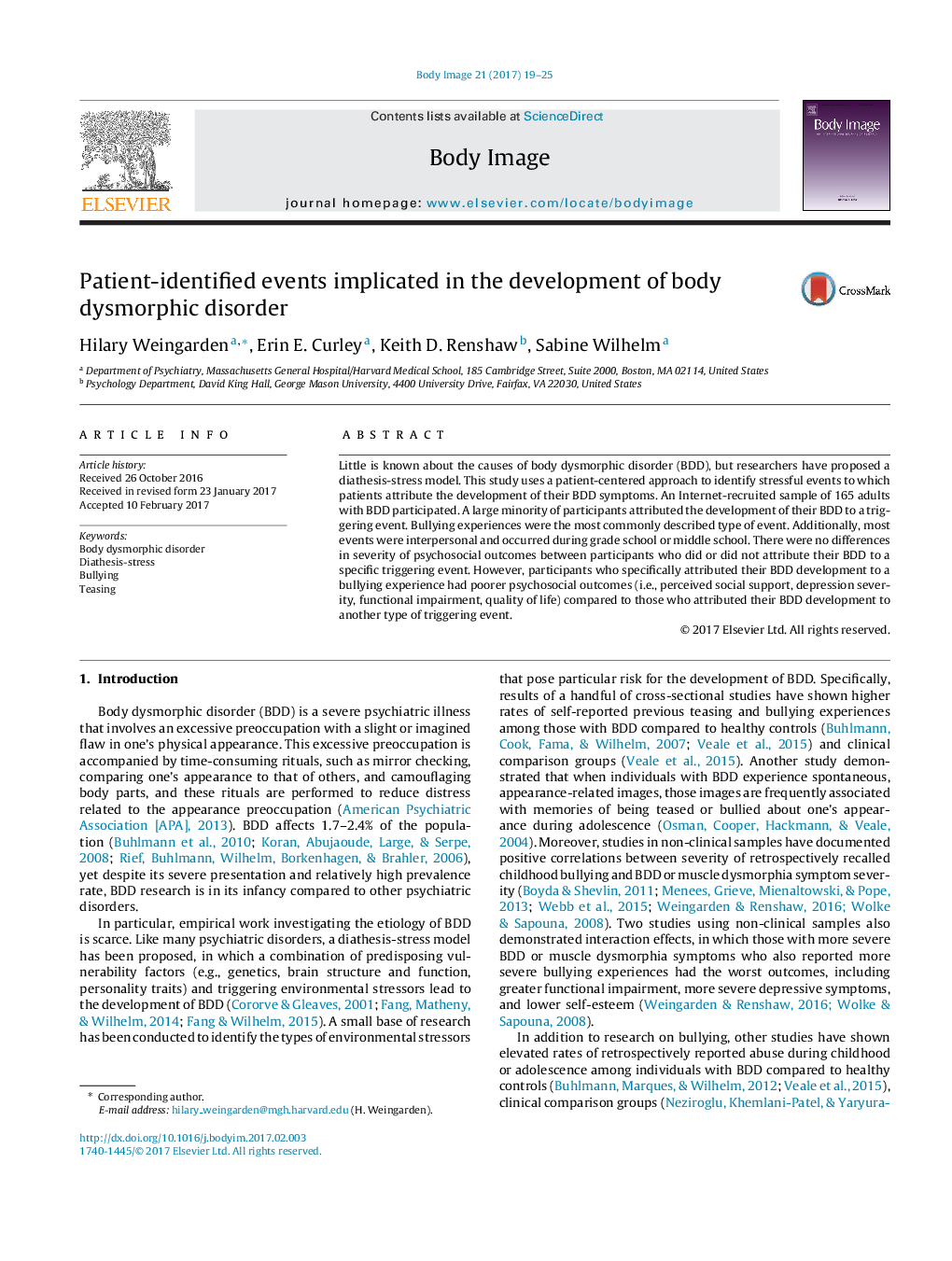| Article ID | Journal | Published Year | Pages | File Type |
|---|---|---|---|---|
| 5038406 | Body Image | 2017 | 7 Pages |
Abstract
Little is known about the causes of body dysmorphic disorder (BDD), but researchers have proposed a diathesis-stress model. This study uses a patient-centered approach to identify stressful events to which patients attribute the development of their BDD symptoms. An Internet-recruited sample of 165 adults with BDD participated. A large minority of participants attributed the development of their BDD to a triggering event. Bullying experiences were the most commonly described type of event. Additionally, most events were interpersonal and occurred during grade school or middle school. There were no differences in severity of psychosocial outcomes between participants who did or did not attribute their BDD to a specific triggering event. However, participants who specifically attributed their BDD development to a bullying experience had poorer psychosocial outcomes (i.e., perceived social support, depression severity, functional impairment, quality of life) compared to those who attributed their BDD development to another type of triggering event.
Related Topics
Health Sciences
Medicine and Dentistry
Psychiatry and Mental Health
Authors
Hilary Weingarden, Erin E. Curley, Keith D. Renshaw, Sabine Wilhelm,
